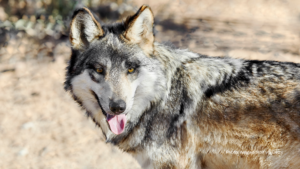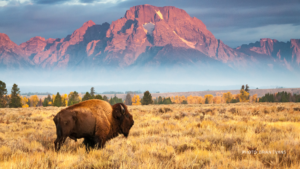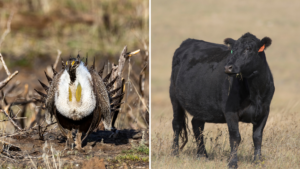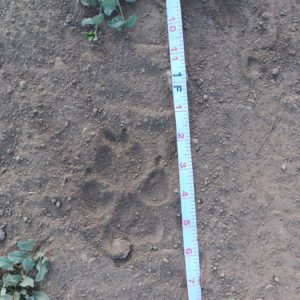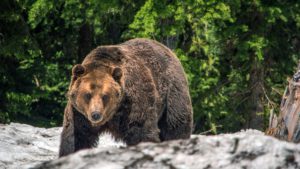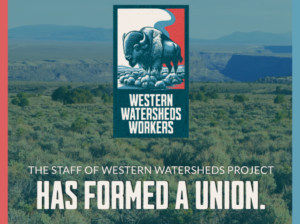For immediate release, August 1, 2019
Media contacts:
Cyndi Tuell, Western Watersheds Project, (520) 272-2454; cyndi@westernwatersheds.org
Sandy Bahr, Sierra Club – Grand Canyon Chapter, (602) 253-8633; sandy.bahr@sierraclub.org
Tricia Gerrodette, local resident, (520) 378-4937; tricia.gerrodette@gmail.com
TUCSON, Ariz. – Yesterday, the Bureau of Land Management (BLM) quietly released its final San Pedro Riparian National Conservation Area (SPRNCA) plan in southeast Arizona by posting it to the agency’s website with no public notice. The plan will guide management of this sensitive and unique river corridor for the next two decades, but doesn’t provide the maximum levels of conservation protection the important river ecosystem merits.
“They are supposed to be conserving, protecting, and enhancing this conservation area, but instead the BLM has approved business-as-usual in allowing livestock grazing, which causes great ecological harm,” said Cyndi Tuell, Arizona and New Mexico Director of Western Watersheds Project. “Despite our best efforts, the BLM has blinders on about the adverse impacts of livestock grazing in the SPRNCA, and is prioritizing livestock even in this fragile desert oasis.”
The approved plan allows livestock grazing to occur on four grazing leases within the SPRNCA, including within the riparian area of the Babocomari River. It fails to address the ongoing issues of trespass livestock or discuss the recreational disadvantages of grazing impacts. The final also authorizes unspecified and unrestricted use of “targeted grazing” anywhere within the SPRNCA, a change the agency made late in the planning process and failed to fully analyze.
“With all of the stresses on the San Pedro River and this wonderful conservation area, and the mandate in the legislation that created it, BLM should have produced a plan that maximizes protection of the river and the plants and animals it sustains. It did not,” said Sandy Bahr, chapter director for Sierra Club’s Grand Canyon Chapter. “Like the Rosemont Mine decision, the rubberstamping of deleterious land uses will not stand, and we’re evaluating our options going forward to ensure the full protection the SPRNCA deserves,” said Bahr.
“It’s disappointing that BLM isn’t doing all it can to protect this special place,” said Tricia Gerrodette, Sierra Vista resident and long-time advocate for the San Pedro River. Michael Gregory, another long-time advocate for the river and one of the local activists who began the original campaign to establish the SPRNCA, is equally disappointed. “Rather than adhering to the primary purpose of the SPRNCA legislation, and despite overwhelming public support and clear legislative intent for protective management, the BLM insists instead on a far-fetched notion of “balancing” resource protection against destructive resource use.”
Conservation groups will be evaluating the approved plan to determine next steps in ensuring the SPRNCA’s protection.
Background
The 56,000-acre conservation area was designated by Congress as the nation’s first Riparian National Conservation Area on November 18, 1988. It starts at the US-Mexico border and continues north about 47 miles along the San Pedro River, supporting a riparian area that includes four of the rarest habitat types in the Southwest: Fremont cottonwood/Goodding willow woodlands, cienegas, big sacaton grasslands, and mesquite bosques. The SPRNCA is recognized as a Globally Important Bird Area, attracting birders from all over the world and providing habitat for more than 350 species of birds. Within the last 150 years, more than 80 species of mammals have called the SPRNCA home, making it among the richest assemblages of land mammal species in the world. The SPRNCA also supports more than 50 species of reptiles and amphibians and has historically supported 13 species of native fishes. Today, only two native fish remain in the river, the longfin dace and desert sucker.
The SPRNCA provides habitat for 18 federally listed, or proposed, threatened and endangered species, including designated critical habitat for the endangered Huachuca water umbel (Lilaeopsis schaffneriana ssp. recurva) and proposed critical habitat for the northern Mexican gartersnake (Thamnophis eques megalops) and yellow-billed cuckoo (Coccyzus americanus). Designated critical habitat for southwestern willow flycatchers (Empidonax traillii extimus) occurs on the San Pedro River downstream of the SPRNCA, and designated critical habitat for the jaguar (Panthera onca) occurs approximately three miles west of the SPRNCA.
This Record of Decision was released on the same date a federal judge overturned a U.S. Forest Service decision on the controversial Rosemont Mine citing the agency’s “inherently flawed analysis from the inception of the proposed Rosemont Mine.” The judge found the agency misapplied the regulatory framework in which the agency needed to issue a decision.
###

